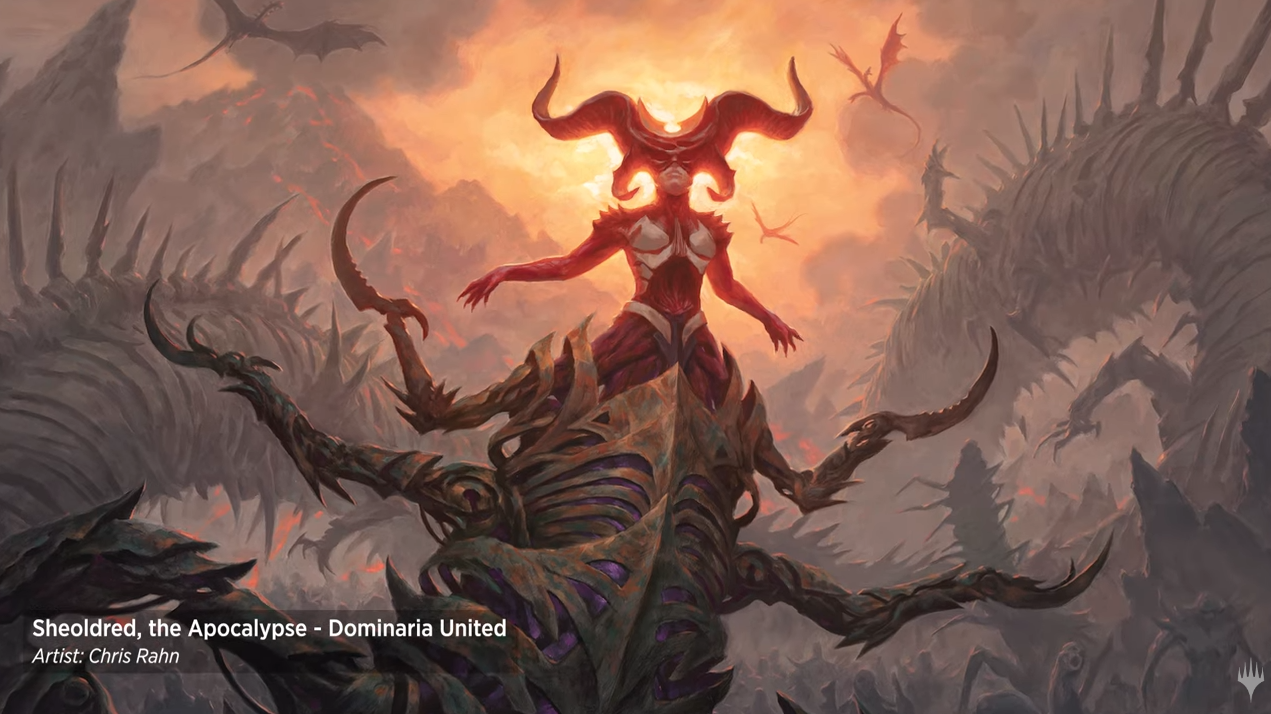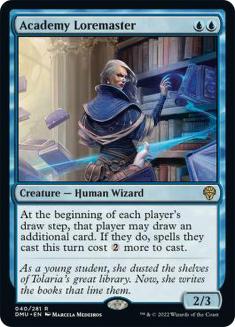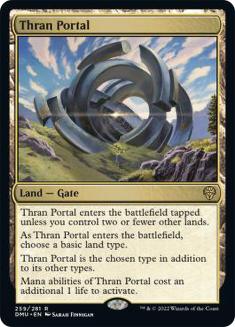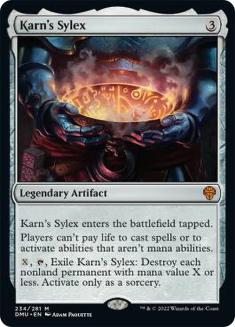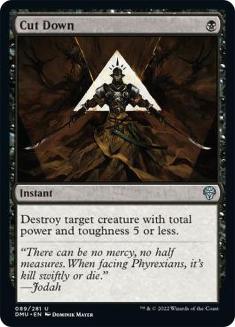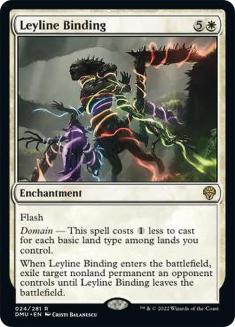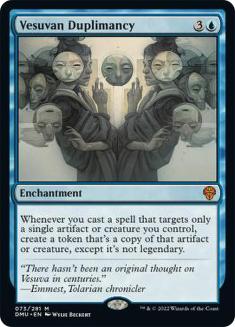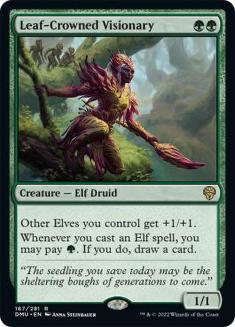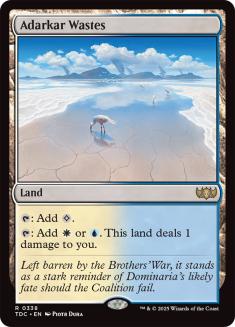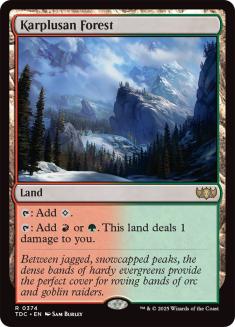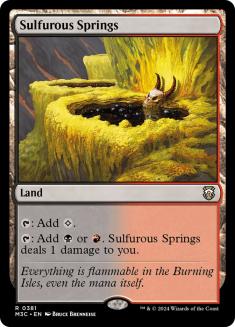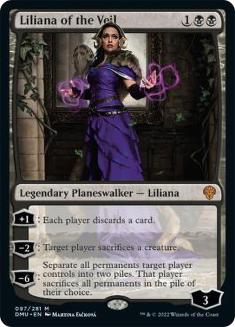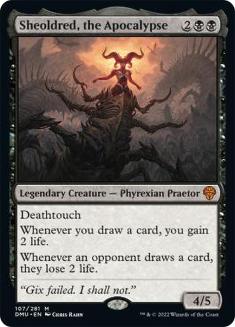Hello to everyone! In today’s article, I’ll go over the Top 10 cards from Dominaria United that I feel are the best bets for maintaining value or going up in value.
Setting some ground rules, because set releases are totally all over the place product-wise these days:
- Cards from any ancillary product tied to Dominaria United are fair game. This includes, but is not limited to, the main set, the Commander set, the Legends Reborn cards, the Jumpstart-unique cards, and the Commander cards only appearing in Set Boosters. This does not include cards from The List.
- This is a list of cards that I think will maintain or go up in value between now and the next set release, not just the greatest hits of what’s the most valuable right now. I put more emphasis on where a card will be in relation to now than what is objectively the highest-priced card.
- In most instances, I’ll only talk about the regular non-foil version of a card. If I want to highlight a special treatment, I’ll note it in that card’s discussion.
- I’ll go from #10 to #1, because I can!
And without further ado, my Top 10 Dominaria United List!
10) Academy Loremaster
Blue generally doesn’t get bodies that are two power and three toughness that can also attack at two mana. Academy Loremaster on the surface looks like so many other symmetrical Howling Mine effect cards that generally get dismissed due to helping the opponent before yourself.
The trick on Academy Loremaster is that if you cast it on the second turn, your opponent is either going to decline the draw, or else take the extra draw but most likely have to skip casting anything of relevance on their turn. It’s extremely easy to stack your deck to take advantage of Academy Loremaster by piling on the instants and the flash creatures. You might have your spells cost two extra mana on your turn, but those same spells won’t cost more when you get to your opponent’s turn.
In short, Academy Loremaster is my pick for the sleeper card of the set, the one that has the most potential to slot into a future deck and become a played card. At the worst-case scenario, it’ll eat a Lightning Bolt or trade against an early aggressive creature.
9) Thran Portal
There are a lot of really cool mana-fixing lands in Dominaria United: the cycle of common dual lands, six of the ten painlands, and Plaza of Heroes. It’s amazing to me that this set’s version of Evolving Wilds / Terramorphic Expanse is sitting at nearly bulk price. It’s not only a great mana enabler, it’s also a Gate. Baldur’s Gate pushed several new Gates into the Magicsphere. Thran Portal slots right into any Gate deck, but also signals that the Gate subtype isn’t going away anytime soon.
8) Karn’s Sylex
It’s been a long time since we’ve gotten a proper Nevinyrral’s Disk in Standard – I’m thinking all the way back to Oblivion Stone in Mirrodin? While the only Standard-legal card it’ll likely hose with the not-paying-life clause is Tenacious Underdog, the ability to just wipe the entire battlefield is sorely missed as a colorless effect any deck can run.
In Commander, Karn’s Sylex will shut down a slew of niche but played strategies. Tired of someone taking out the entire table with Aetherflux Reservoir? No more paying 50 life to deal 50 damage! Got someone who loves running Greed or Bolas’s Citadel? That’s a no! Big hatred for Fire Covenant? Tired of things coming back with Phyrexian Reclamation? Karn’s Sylex will hose all these cards before resetting the table (or just removing smaller things so that you can swing on in with the bigger ones).
7) Cut Down
Amazing early-game creature kill, with the late-game addition of taking down utility creatures. There’s not much to say about Cut Down – it’s a pretty straightforward card, and will be a staple whenever any metagame leans towards aggressive rush decks.
6) Leyline Binding
So here’s the question – what mana cost does Oblivion Ring need to be in order to be playable in Standard? Over the past few years, the answer is “not three,” as cards like Borrowed Time and Touch of the Spirit Realm have failed to see play, while cards like March of Otherworldly Light and Portable Hole saw a lot of action.
With a single Triome on the battlefield, Leyline Binding costs the same as Oblivion Ring, but has the advantage of flash. That’s a huge, huge upgrade because there’s a lot of Binding that’ll happen at the end of an opponent’s turn. While I don’t think most decks will be pushing full domain, I think Leyline Binding becomes one of the best removal spells in Standard once you get it to three mana, and it becomes pretty gross at two mana. This will be a ubiquitous kill spell that will find its way into older formats like Legacy, where dual lands make this an easy two-drop.
5) Vesuvan Duplimancy
Consider this my lesson from Orvar, the All-Form and Arcane Bombardment – any card that allows players to abuse Whim of Volrath will end up seeing a ton of play. This will be the most valuable card in the set that is almost exclusively Commander-centric in nature. It’ll also do silly things in the same way that Feather, the Redeemed does silly things, but at a more affordable color combination (and harder to remove).
4) Leaf-Crowned Visionary
There’s a full cycle of lords in this set. They all cost two mana, and they are all at rare. While many people are stoked about what Vodalian Hexcatcher brings to Merfolk decks, I’m more in tune with what Leaf-Crowned Visionary brings to Elf decks. This is a perfect card for Elf combo decks that seek to cast a ton of creatures, generate mana, cast more creatures, and kill the opponent in one giant Elfball.
Leaf-Crowned Visionary accomplishes two goals for this style of deck. First, it allows you to draw more Elves whenever you cast an Elf spell. (To note – this includes cards like Elvish Promenade, even though it’s not really part of the Elf combo build.) Second, it makes your Elves more resilient to removal spells.
This will do stupid things with Birchlore Rangers and Heritage Druid. It’s also a freaking Elf lord, and those tend to be both popular and valuable. Elves also have much more of a reach as a favorite tribal deck than Merfolk, so I believe that Leaf-Crowned Visionary has bigger upside than the Hexcatcher.
3) Adarkar Wastes / Karplusan Forest / Sulfurous Springs
All ten painlands will see print by the end of the year – Aaron Forsythe said as much. The five allied-color painlands are going to be the most valuable in the long run, simply because they haven’t been mass-reprinted as much as the five enemy-color painlands. In addition, the five allied-color painlands are entering Pioneer for the first time. This means that more than one format will drive their price.
Prior to reprinting, these three were sitting at around $10-$12 each. Right now, you can get Dominaria United copies for around $2-$3 each. Once the initial frenzy of pack opening and supply dump subsides, these three painlands in particular will shoot back up in value. They won’t hit the $10-$12 they were previously, but I expect them all to be in the $4-$6 range due to both mass appeal and price memory.
Plus, there’s The Brothers’ War – but I’ll talk about that at the end of this article.
2) Liliana of the Veil
Liliana of the Veil is arguably one of the top five planeswalkers in Magic’s history. She’ll not only be a house in Standard, she’ll also see extensive play in Pioneer. Prior to reprint, Liliana of the Veil was at $70-$80. The current reprint version is half that.
There’s every reason to believe she will just rebound from here! She’s playable in every major Magic format, relevant in the current Standard and Pioneer metagames, and a hugely popular character to boot. If you’re waiting for Liliana of the Veil to go down further before buying into her, don’t – she isn’t going lower than she’s at right now.
1) Sheoldred, the Apocalypse
The first week of Magic: Arena Standard results are in, and the clear winner so far is Sheoldred, the Apocalypse. Sheoldred is everywhere, and I’m here to tell you – Sheoldred is the real deal. Sheoldred is capable of winning a game on its own in the same way that Omnath, Locus of Creation was capable of winning a game on its own. Actually, scratch that: I’m here to tell you that Sheoldred is better!
Sheoldred does not need any particular interaction to swing four life every turn – two your way, and two against your opponent. This is without any meaningful interaction from either player, such as extra card draw. It negates the drawback on Tenacious Underdog, and it does crazy things with Invoke Despair. It curves into Evolved Sleeper, and it plays ridiculously with Fell Stinger, anything that makes Blood tokens, Reckoner Bankbuster, Fable of the Mirror-Breaker, Consider, Wedding Announcement, Ledger Shredder, Reckoner’s Bargain, and so on.
Did I also mention that Sheoldred is four mana for a 4/5 deathtouch creature? There’s virtually no effort needed to have Sheoldred completely dominate a battlefield and take over the game. Sheoldred is likely good enough to see Pioneer play (at the least) and Modern play (at the most).
I think there’s a very real possibility that Sheoldred gets banned in Standard within the next year. This is not hyperbole – the last time I felt this strongly about a card is Underworld Breach, nearly three years ago. I’m not saying that Sheoldred is a Top 10 black card of all time (it’s not), but I am saying that it’ll be completely format-warping to Standard in the same way Omnath was, except that Sheoldred is easier to cast and easier to enable than Omnath was.
Postscript: Set Structure
Before I go, I do want to talk a little bit about the structure of four sets: Dominaria United, The Brothers’ War, Phyrexia: All Will Be One, and March of the Machine (+ Aftermath). Wizards of the Coast (WotC) has done an amazing job leading up to this storyline and group of sets, going all the way back to Kaldheim, when the first Phyrexian Praetor (Vorinclex) was loosed back upon the Magic world. The way I see it, there are some things to be cognizant of going into the next few months!
WotC wants to design Standard environments where sets can have some play against other previously released (and upcoming) sets. For instance, the remaining four painlands are almost undoubtedly going to be in The Brothers’ War, and Elesh Norn’s new card will be in Phyrexia: All Will Be One. Those are easy calls to make based on current principles. Let’s delve a little deeper.
The key art for March of the Machine shows Teferi, multiple planes (Kamigawa, Theros, and Zendikar are featured), and the Phyrexian symbol instead of the “o” on “of”. This leads me to believe that this set will encompass multiple planes (much like Magic Origins) and will likely have a strong multicolor or tribal component.
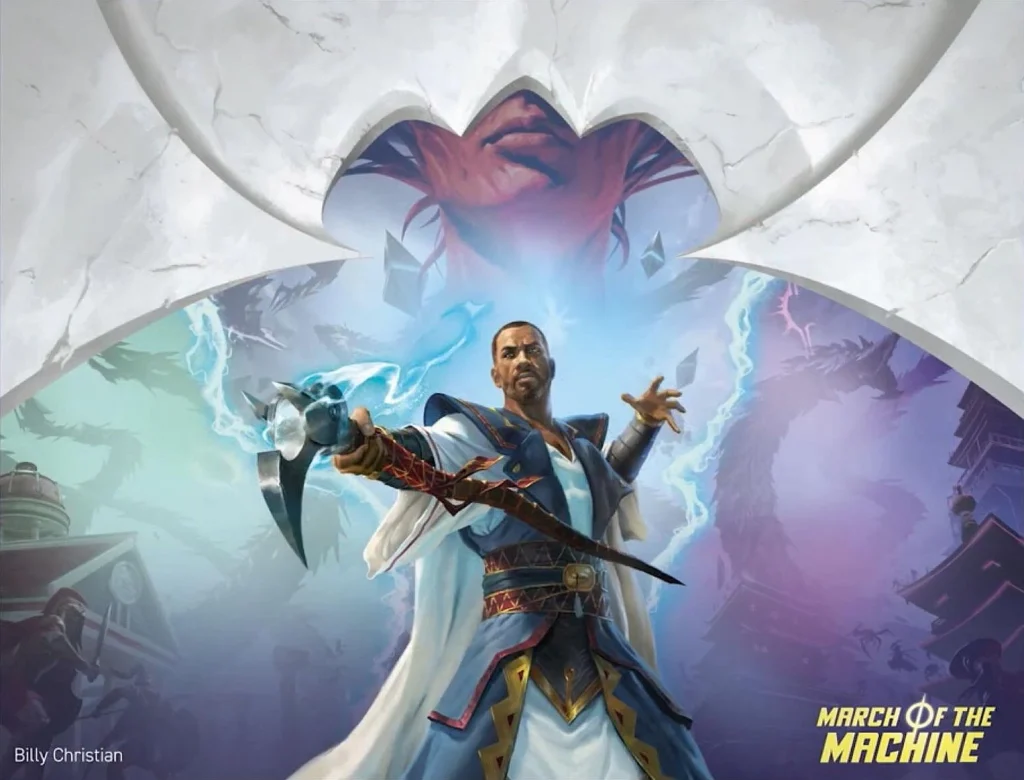
Powerstone Shards are a new mechanic that right now are solely on Karn, Living Legacy (Standard) and The Mana Rig (Commander). This is the sort of plant that would make sense for a full-blown treatment in The Brothers’ War, which is going to be a heavily artifact-centric set.
The Prediction
So here’s how I think this plays out in practical terms. We start with a five-color, domain-driven set (Dominaria United). We then move to a heavily artifact-centric set, where we finally see the return of colorless mana as a huge component of the set. This justifies the painlands in Standard, gives a huge boost of colorless-specific cards beyond the Eldrazi, and allows for some smoothing over between an all-color centric set and a no-color-centric set.
The following set on Phyrexia will undoubtedly see the return of Phyrexian mana. This is another way to smooth out color issues, at a cost – you can still cast the spell, but if your mana is off, you’re potentially paying life to get the spell out there.
The last of these is March of the Machine, which, as I said previously, will likely focus on five planes (the three pictured in the key art, along with Dominaria and Phyrexia/New Mirrodin), and have a tribal component / multicolor component to bring things back around tied to Dominaria United.

